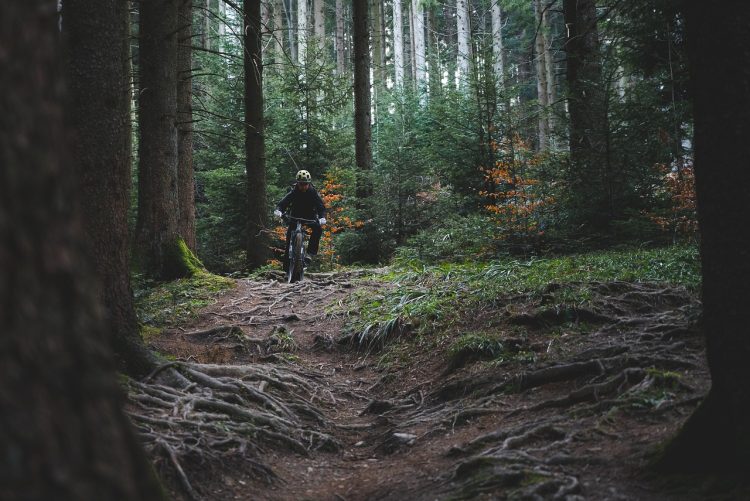Road biking and mountain biking are both exhilarating ways to explore the outdoors, but they require different skills, equipment, and mindsets. If you’re an avid road cyclist looking to branch out into mountain biking, you may find the transition challenging but incredibly rewarding. Mountain biking offers an exciting change of scenery, with rugged terrain, wooded trails, and a sense of adventure that goes beyond the smooth asphalt of road cycling.
In this article, we’ll cover some of the key differences between road biking and mountain biking, provide tips on how to adapt your skills, and highlight the essential gear you need to get started. With the right preparation and approach, you can make a smooth transition from road biking to mountain biking and enjoy the thrill of off-road riding.
1. Understanding the Key Differences
The first step in transitioning from road biking to mountain biking is understanding the fundamental differences between the two disciplines. While both involve riding a bike, the skills, techniques, and equipment required for each are quite distinct.
Terrain
The most obvious difference between road biking and mountain biking is the terrain. Road biking involves riding on smooth, paved roads, whereas mountain biking takes you off-road on trails that can include rocks, roots, steep climbs, and technical descents. Mountain biking requires you to navigate uneven surfaces, often with sudden obstacles that demand quick reactions.
Riding Position and Bike Geometry
Mountain bikes have a different geometry compared to road bikes. They typically have a more upright riding position, wider handlebars, and a lower center of gravity. This design helps with stability and control on rough terrain. The riding position also allows for better maneuverability, which is essential when navigating tight turns and obstacles.
Skill Set
Road biking is primarily about maintaining a steady pace, efficient pedaling, and endurance. Mountain biking, on the other hand, involves a broader skill set that includes handling obstacles, shifting weight for balance, and choosing lines through technical sections. While road biking focuses on speed and stamina, mountain biking emphasizes control, agility, and adaptability.
2. Adjusting Your Riding Technique
Transitioning to mountain biking requires you to adjust your riding technique to suit the demands of off-road trails. Here are some key techniques to work on as you make the switch:
Balance and Body Position
In mountain biking, your body position is crucial for maintaining balance and control. Unlike road biking, where you stay seated for most of the ride, mountain biking often requires you to stand up and shift your weight. When riding downhill or over obstacles, keep your pedals level and your body centered over the bike. Lowering your center of gravity by bending your knees and elbows will help you stay balanced and absorb shocks from the terrain.
Braking Technique
Braking in mountain biking is different from road biking. On trails, you need to use both brakes in a controlled manner to maintain traction and avoid skidding. The front brake provides most of your stopping power, but it’s important to modulate both brakes to stay in control, especially on loose or steep surfaces. Practice feathering your brakes to make smooth, gradual stops rather than sudden, jerky ones.
Line Choice
One of the key skills in mountain biking is choosing the right line—the path you take through a section of trail. Unlike road biking, where you typically have a clear, unobstructed path, mountain biking requires you to navigate around rocks, roots, and other obstacles. Look ahead and plan your line in advance, aiming for the smoothest and most efficient route through technical sections. The more you practice, the better you’ll become at reading the trail and making quick decisions.
3. Building Confidence on the Trails
Mountain biking can be intimidating at first, especially if you’re used to the predictability of road cycling. Here are some tips to help you build confidence and feel more comfortable on the trails:
Start with Beginner-Friendly Trails
When you’re first starting out, it’s important to choose trails that match your skill level. Look for beginner-friendly trails that have smooth surfaces, gentle climbs, and minimal technical features. These trails will allow you to get a feel for off-road riding without overwhelming you with difficult obstacles. As you gain confidence, you can gradually progress to more challenging trails.
Practice Fundamental Skills
Spend time practicing fundamental mountain biking skills, such as cornering, braking, and riding over small obstacles. Find a local skills park or a section of trail where you can practice these techniques in a controlled environment. The more you practice, the more comfortable you’ll become with the unique demands of mountain biking.
Ride with Experienced Mountain Bikers
Riding with experienced mountain bikers is one of the best ways to learn and improve your skills. They can provide valuable tips, demonstrate proper technique, and help you navigate difficult sections of trail. Plus, riding with others can boost your confidence and make the experience more enjoyable.
4. Essential Gear for Mountain Biking
Mountain biking requires different gear than road biking, and having the right equipment is essential for a safe and enjoyable ride. Here are some of the key pieces of gear you’ll need as you transition to mountain biking:
Mountain Bike
The most important piece of gear is, of course, your mountain bike. There are several types of mountain bikes to choose from, including cross-country (XC), trail, and enduro bikes. For beginners, a hardtail mountain bike (with front suspension only) is a great choice, as it provides a good balance of affordability and capability. As you become more experienced, you may consider upgrading to a full-suspension bike for added comfort and control on rough terrain.
Helmet
A properly fitting helmet is essential for mountain biking. Unlike road biking helmets, mountain biking helmets often have more coverage at the back of the head and a visor to protect against branches and debris. Consider investing in a helmet designed specifically for mountain biking to ensure you have the best protection.
Gloves and Protective Gear
Mountain biking can be rough on your hands, so a good pair of gloves is a must. Gloves provide extra grip on the handlebars and protect your hands in case of a fall. Depending on the type of trails you’re riding, you may also want to consider additional protective gear, such as knee and elbow pads, to help prevent injuries.
Shoes and Pedals
Mountain biking shoes and pedals are different from those used in road cycling. Many mountain bikers prefer flat pedals with grippy shoes, as they allow for quick foot placement and easy dismounting. If you prefer clipless pedals, make sure to use mountain bike-specific shoes with recessed cleats that make walking on rough terrain easier.
Hydration and Nutrition
Mountain biking can be physically demanding, so it’s important to stay hydrated and fueled. A hydration pack is a convenient way to carry water, snacks, and other essentials while keeping your hands free. Make sure to pack enough water and high-energy snacks to keep you going, especially on longer rides.
5. Adapting Your Fitness and Training
Mountain biking requires a different type of fitness than road biking. While both disciplines demand cardiovascular endurance, mountain biking places a greater emphasis on strength, power, and agility. Here are some tips for adapting your training to suit the demands of mountain biking:
Focus on Core Strength
Core strength is essential for maintaining balance and control on technical terrain. Incorporate exercises like planks, Russian twists, and mountain climbers into your training routine to build core stability. A strong core will help you stay centered on the bike and absorb shocks from rough trails.
Build Upper Body Strength
Mountain biking requires more upper body strength than road biking, especially when navigating technical descents and lifting the front wheel over obstacles. Incorporate upper body exercises like push-ups, pull-ups, and shoulder presses into your training routine to build the strength needed for off-road riding.
Incorporate Interval Training
Mountain biking often involves short bursts of intense effort, such as climbing a steep hill or sprinting through a technical section. Incorporate interval training into your rides to build the power and anaerobic endurance needed for these efforts. Short, high-intensity intervals followed by periods of rest will help you adapt to the demands of mountain biking.
6. Staying Safe on the Trails
Safety is a top priority when mountain biking, especially if you’re new to off-road riding. Here are some key safety tips to keep in mind:
Know Your Limits
It’s important to know your limits and avoid taking on trails or features that are beyond your skill level. Start with easier trails and gradually work your way up to more challenging terrain as you gain experience and confidence.
Ride Within Your Comfort Zone
Mountain biking can be thrilling, but it’s important to ride within your comfort zone. If you encounter a section of trail that feels too difficult, there’s no shame in getting off your bike and walking. It’s better to take your time and stay safe than to risk injury by pushing yourself too far.
Communicate with Other Riders
When riding with others, communicate clearly to let them know your intentions. Use hand signals, call out when you’re stopping, and let others know if you’re planning to pass. Good communication helps prevent accidents and ensures that everyone stays safe on the trail.
Embrace the Adventure
Transitioning from road biking to mountain biking is an exciting journey that opens up new possibilities for exploration and adventure. While the skills and techniques required for mountain biking are different, with practice and patience, you can master the art of off-road riding. Embrace the challenges, enjoy the thrill of the trails, and take in the beauty of nature as you explore new terrain on your mountain bike. With the right approach, you’ll soon discover why so many cyclists fall in love with mountain biking.





















